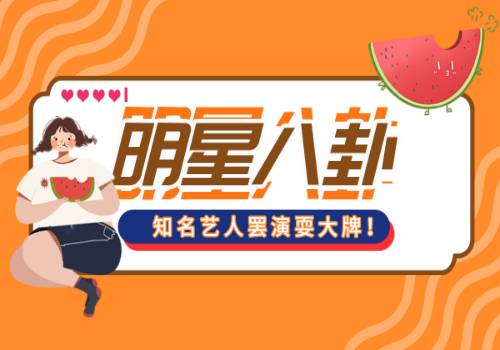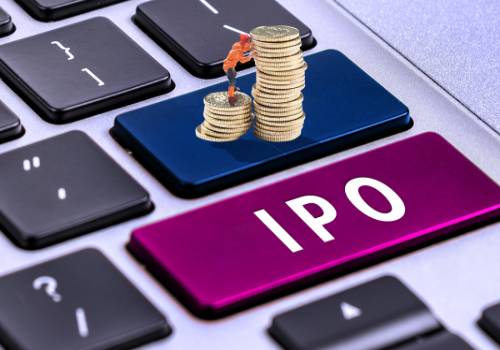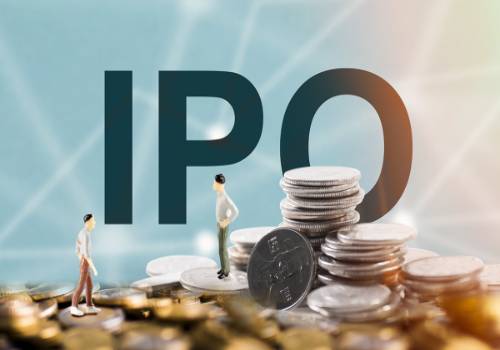Credit: CATL
BEIJING, TiPost (August 18) -- With the development of technology, the driving range of new energy vehicles has increased a lot, but the problem of recharging new energy vehicles lingers.
Therefore, there is a chaotic and bizarre situation: on the one hand, the penetration rate of new energy vehicles is constantly increasing, and on the other hand, there are recharging problems such as long charging times and limited charging piles.
 (资料图)
(资料图)
Wu Kai, Chief Scientist of CATL, believes that "there are two obvious changes in the user side of new energy vehicles at present. One is the change of the user group of new energy vehicles, gradually shifting from the pioneer group to the general public; the other is the change in demand, the endurance problem of new energy vehicles has been basically solved, and fast recharging has become the issue that consumers are more concerned about."
From the perspective of consumer demand, promoting supercharging technology is already on the agenda.
Charge for 10 minutes, drive for 400 kilometers
Currently, supercharging technology mainly focuses on two areas: one is high-current DC supercharging, and the other is high-voltage DC supercharging, which aims to increase charging rates by increasing current or voltage.
The charging rate, often represented as "C," is currently between 1C and 2C for mainstream charging speeds of various automakers, meaning it takes about half an hour to an hour to fully charge the battery. However, with the adoption of the 800V high-voltage platform, the maximum charging rate can reach 6C.
But there is a problem: at high charging rates, the rate of lithium-ion deintercalation and migration increases, and some lithium ions do not have enough time to enter the positive and negative electrodes, leading to the formation of by-products, the loss of active materials, and accelerated battery life decay. Moreover, lithium plating is prone to occur, and if the lithium dendrites pierce the separator, it will cause internal short circuits in the battery, leading to safety accidents such as fires.
In other words, in order to achieve supercharging, it is not enough to simply increase the charging speed. If there is no breakthrough in the materials, structure, and production processes of the power battery, fast charging can become dangerous.
Therefore, power battery companies have started to make technological breakthroughs in materials, material systems, system structures, and other aspects.
Recently, CATL released a 4C fast-charging battery - the Shenxing Superfast Charging Battery, which claims to achieve a super-fast charging speed of "10 minutes of charging for a 400 -kilometer driving range."
Based on the "rate of lithium-ion deintercalation and migration," the Shenxing fast-charging battery uses fully nano crystallized lithium iron phosphate positive electrode material to build a super electron network, reducing the resistance of lithium-ion deintercalation and improving the speed of lithium-ion deintercalation.
In terms of negative electrode materials, CATL adopts the latest second-generation fast ion ring technology, modifies the graphite surface, increases the lithium-ion insertion channels and shortens the insertion distance, improving the lithium-ion attachment efficiency.
In terms of electrolyte conduction, CATL has developed a super-conductive electrolyte formula, optimized the ultra-thin SEI film, and further reduced the conduction resistance.
In addition, CATL has also improved the high porosity and low tortuosity of the separator, thereby improving the rate of lithium-ion liquid transmission.
While achieving super-fast charging, the Shenxing superfast charging battery also uses improved electrolytes and is equipped with a high-safety coating separator for safety.
In addition, CATL controls the global temperature field through intelligent algorithms. It is stated that the "Shenxing" system uses cell temperature control technology, which can quickly heat up to the optimal working temperature range in low-temperature environments. Even in a low-temperature environment of -10℃, it can be charged to 80% in 30 minutes, and acceleration up to 0~100km/h does not degrade the battery in a low-temperature low-power state.
According to Gao Huan, CTO of CATL" domestic passenger car division, the Shenxing superfast-charging battery will achieve mass production at the end of this year, and electric vehicles equipped with tthis battery will be launched in the first quarter of next year.
Lithium Iron Phosphate With"4C" to reduce costs
However, fast-charging batteries are not something new.
Previously, the SVOLT short blade battery already used the 4C super-fast charging technology for 800V battery systems. Farasis Energy also released a new power battery solution called SPS last year, which supports 800V platforms and "4C" ssuperfast charging. Even CATL themselves have previously released 4C batteries. Last year, CATL released the "4C" Qilin battery (English "Kirin") based on the ternary lithium system.
However, the most noteworthy aspect of this Supercharging battery is the use of lithium iron phosphate.
Batteries can be divided into ternary lithium and lithium iron phosphate based on the cathode material. In terms of installation volume, ternary lithium batteries used to have an absolute advantage. Data shows that in June 2019, ternary battery installation accounted for 75%, while lithium iron phosphate battery installation accounted for 25%. However, in the first quarter of this year, there has been a reversal in lithium iron phosphate battery installations, reaching 68.2%, while ternary batteries only accounted for 31.7%.
Compared to ternary lithium, lithium iron phosphate is more safe and has relatively lower costs. Generally speaking, the cathode material of lithium batteries accounts for 50% of the total battery cost, while the total cost of lithium iron phosphate batteries is 20% lower than that of ternary lithium batteries.
Therefore combined with "4C" technology, lithium iron phosphate has greater cost advantages.
Currently, power batteries account for nearly 40% of the overall vehicle cost.a price war has erupted in the automotive market since 2023. In this intensified competition, in order to maintain competitiveness, new energy vehicle companies can only improve product quality and reduce prices. Behind the improvement in product quality and price reduction lies the imperative to reduce the overall vehicle cost. As power batteries account for a significant proportion of the overall vehicle cost, cost reduction seems to be imminent.
However, due to the low energy density and weak charging rate of lithium iron phosphate, it is a big challenge to achieve fast charging and high energy density for lithium iron phosphate. But for CATL, this technological breakthrough is driven by both the demand from automakers and its own long-term development.
According to the latest data released by South Korean battery market research firm SNE Research, CATL achieved a total battery assembly volume of 112GWh in the first six months of 2023, a year-on-year increase of 56.2%, and its market share increased by 1.4 percentage points to 36.8% compared to the same period last year, which is approximately equal to the total battery assembly volume of BYD (second place), LG Chem (third place), and Panasonic (fourth place).
Although CATL"s position seems unshakable, BYD is narrowing the gapwith its market share rising from 11.6% in the same period of 2022 to 15.7%.
On the demand side, many car companies are actively looking for second suppliers orentering the battery market. For example, XPENG has embraced second-tier battery manufacturers, including CALB and Sunwoda.Although NIO is temporarily purchasing batteries from CATL, it has established its own battery company and is researching and developing solid-state batteries.GAC Aion hasbuilt its own power battery factory, and its holding company, Yinpai Battery Technology Co., Ltd., will officially start building a battery factory at the end of 2022.
The crisis is already shown. Morgan Stanley recently downgraded CATL"s rating from " equal weight" to "low weight" in a research report. The news immediately caused market shock, and CATL"s stock price plummeted more than 6% in intraday trading, evaporating 50 billion yuan in market value in just one day.
In the report, Morgan Stanley wrote that it expects short-term battery production capacity to still be in excess, leading to an unavoidable price war. In the second half of this year, second-tier battery manufacturers may adopt more aggressive price strategies to gain market share, and the target price for CATL has been lowered by about 16% to 180 yuan.
Of course, some people question the coincidence of Morgan Stanley"s report release timing and suspect there are other reasons behind it. But for CATL, it is clear that it has already felt the more intense competition from the market itself. Whether it is the "lithium mine rebate" program launched at the beginning of the year or the need to reduce costs, CATL, as the reigning champion, also needs to take the initiative and prepare for the future.
下一篇:最后一页
X 关闭
X 关闭
观点
-

Ldquo五rdquo企业是指?
0471房产来为大家解答以上的问题。Ldquo五rdquo企业是指?这个很多人还
-

今年已有25家药企IPO终止 销售费用成问询重点
今年以来,截至8月15日,沪深北交易所共有25家医药或器械相关企业终止I
-

占比例的百分比怎么算 占比
1、持仓占比就是你已经买入股票的资金占总资金的比例。2、在股票操作中
-

2094万美元利息未支付,远洋称已获足够赞同票达成违约豁免
2094万美元利息未支付,远洋称已获足够赞同票达成违约豁免
-

面子挂不住了?被文在寅批“失去了国格”,韩国总统办公室借媒体社论回击
【报道见习记者姜蔼玲】韩国前总统文在寅13日在社交媒体平台SNS上发文
-

暑假带娃到崩溃?宛平南路600号给家长这些建议
暑假已经过半,家长和孩子的精神状态还好吗?最近,记者在徐汇滨江展开
-

江西赣州农村商业银行原董事长陈迎宾被查
【江西赣州农村商业银行原董事长陈迎宾被查】据“廉洁江西”微信公众号
-

港风夜市,助推深港消费融合
【看点】光明日报记者严圣禾光明日报通讯员姚丽婷鸡蛋仔、煎酿三宝、港
-

日本将敦促企业公开生成式AI数据类型
据日经新闻,日本将敦促企业公开用于训练生成式AI程序的数据类型;日本
-

京东健康深入布局即时零售赛道 致力建设开放共赢生态
8月10日,2023年第十六届西普会——中国健康产业(国际)生态大会在海
